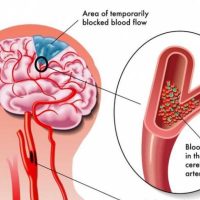
Childbirth can be dangerous even in the most sterile hospitals but unhygienic conditions add an additional deadly threat to women and their babies: tetanus.
Tetanus can be prevented with an inexpensive vaccine, but women who are poor or live in remote areas often lack access to essential services such as immunization and are at greater risk.
That was the situation in Indonesia. Immunization programs had eliminated tetanus in three of the sprawling archipelago’s four regions, but lower vaccination rates in the poorest West Papua region meant that the disease remained a major threat there.
After a concerted effort by Indonesia’s government to improve access to health services in remote regions and to increase vaccination rates in the most disadvantaged areas, the nation was declared to have eliminated tetanus last year, meaning less than one case of neonatal tetanus occurs per 1000 live births in each district.
“Eliminating tetanus was a major achievement for Indonesia,” said Dr Jihane Tawilah, WHO’s representative to Indonesia. “Neonatal tetanus is a symbol of health inequality. It affects the poorest and the least educated part of the population.”
Indonesia is one of many countries working to improve access to health services for the most disadvantaged people, as part of its commitment to “leave no one behind” in pursuit of the Sustainable Development Goals (SDGs). Among the 17 goals, SDG 3 focuses on ensuring healthy lives for all people at all ages, while SDG 10 calls for a reduction in inequality within and between countries.
While many countries have made progress in improving the overall health of their populations on a variety of measures, national averages don’t tell the whole story. Groups of people can miss out on health services for a variety of reasons: their gender, where they live, how much they earn, their education, and other social and cultural reasons.
But in order to improve the health of the most disadvantaged people and to increase their access to health services, data are needed about the health state of all population subgroups including the most disadvantaged.
“Monitoring health inequality is essential to ensure no one is being left behind,” said Dr Ahmad Reza Hosseinpoor, who leads WHO’s work on health equity monitoring. “WHO has developed a package of resources and tools to encourage the practice of and build capacity for global and national health inequality monitoring.”
One of the key products in the package is the Health Equity Assessment Toolkit (HEAT), a software application which was launched by WHO last year that enables countries to analyse, interpret and report data on health inequalities in order to shed light on where investments are needed to expand services to those who don’t have them and to improve their health.
When it was first launched, HEAT was restricted to data from WHO’s Health Equity Monitor database, which contains data on reproductive, maternal, newborn and child health for 102 countries. The new edition of the toolkit, called HEAT Plus, enables users to upload data from their own sources, making it a much more powerful tool for analysing and reporting health inequalities across a range of topics.
HEAT Plus, which was tested in Indonesia, allowed the country to analyse and interpret inequalities in many other health topics using vast amounts of its own data.
As a result, Indonesia is now developing its first national report on the state of health inequality, which will be published by the end of the year and will give policy-makers valuable insights that will help them to make strategic decisions to improve health. The nation has committed to integrating health inequality monitoring into its national health information system.
WHO has been working with Indonesia’s health ministry to map the country’s data sources for health inequality monitoring and identify data gaps, analyse the data and report the results.
In addition to HEAT Plus, WHO this week launched two other products to help countries dig deeper into health inequalities, including a step-by-step manual to help countries embed health inequality monitoring in their health information systems, and the statistical codes needed to analyse household survey data to reveal where inequalities lie.











